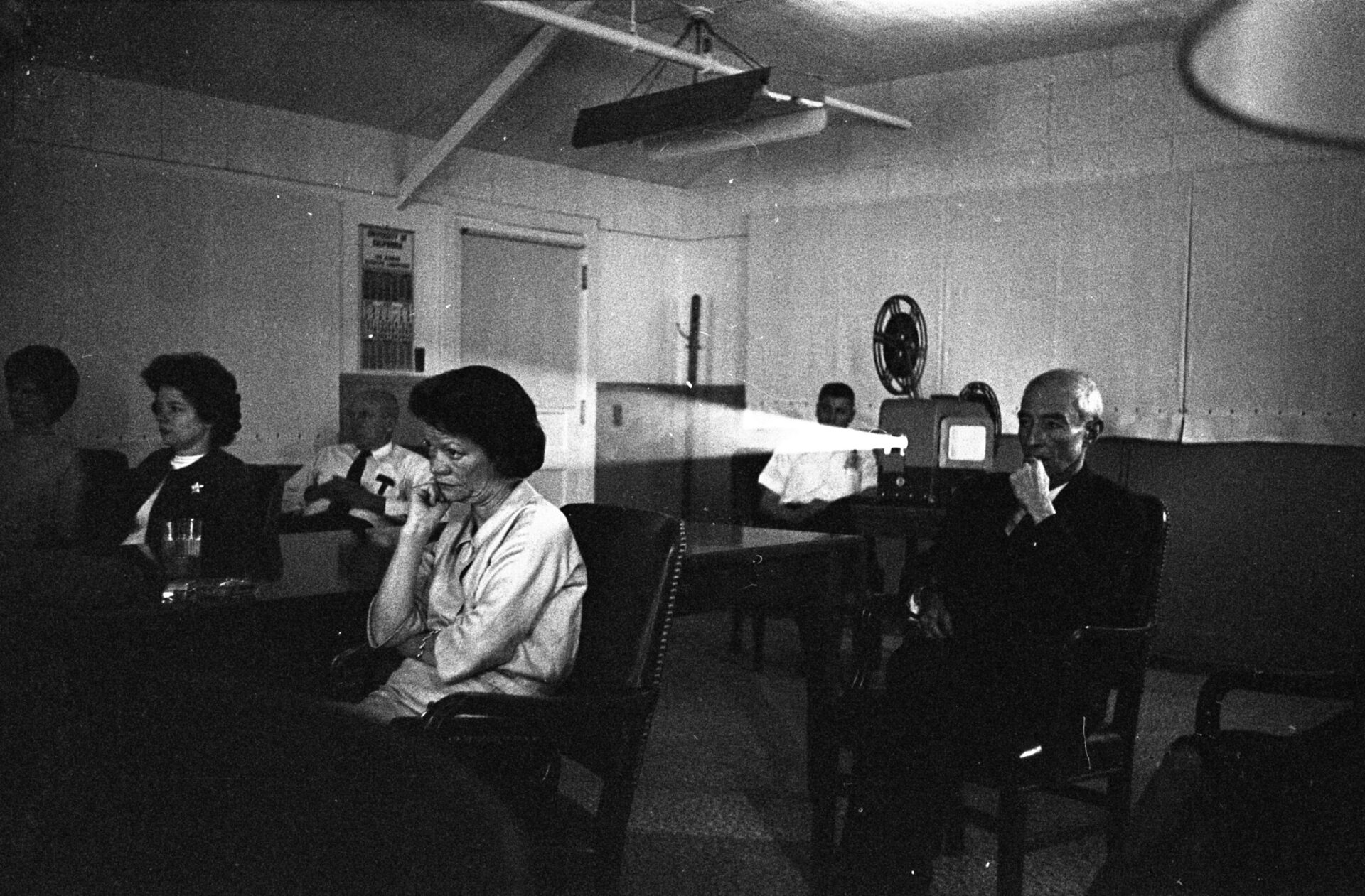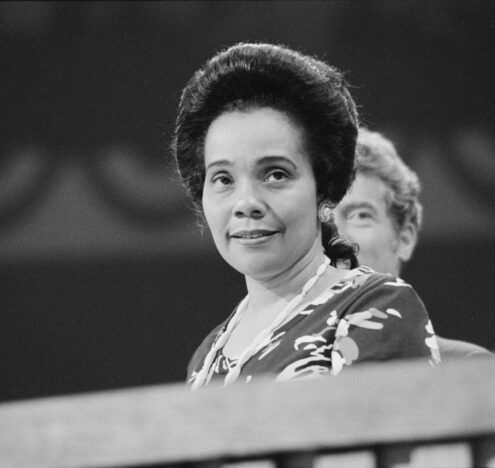As expected, Christopher Nolan’s biopic “Oppenheimer” won best picture at the Oscars Sunday night, a well-deserved honor. But for all that it achieved as a dramatic portrayal of a hugely influential historical figure, the film has also drawn widespread criticism for taking too narrow an approach to its topic. Since its release last summer, a small cottage industry of experts, advocates, and historians has grown up, focused on the issues not addressed in the film.
Important issues that were ignored or dealt with in passing included the unprecedented devastation visited upon the people of Hiroshima and Nagasaki; the ongoing health impacts of nuclear testing, from the Pacific Islands to the Western United States; and the risks to workers involved in producing the bomb, from uranium miners to the people who developed and assembled it.
These omissions were to some degree inevitable in a story focused on the conflicts and contradictions of one man, a complex and fascinating character whose positions on the wisdom and ethics of building nuclear weapons were all over the map.
Oppenheimer’s Contradictions
While his opposition to the development of the hydrogen bomb and his advocacy for international control of atomic energy were admirable, J. Robert Oppenheimer was also the man who rebuffed the efforts of his colleagues to hold off on using the bomb against human targets until its destructive power could be driven home through a demonstration explosion.
He believed that the use of atomic weapons against populated areas would cause such revulsion globally that it would mark the first step towards ending war itself, a belief that was sadly far off the mark. Richard Rhodes documented this point in his classic 1986 book, “The Making of the Atomic Bomb,” in which he noted that “The bomb for [nuclear physicist Niels] Bohr and Oppenheimer was a weapon of death that might also end war and redeem mankind.”
Meanwhile, even as Oppenheimer opposed the H-bomb, he was advocating the development of battlefield nuclear weapons. Oppenheimer explained his views on the matter in a 1951 speech to the New York Bar association in which he argued that nuclear weapons are “an integral part of military operations” but “only as part of a military campaign, which has some other components, and whose purpose is military victory.”
“Only Scientist to Resign”
There was one scientist involved in the Manhattan Project who suffered none of the confusions or contradictions exemplified by Oppenheimer: Joseph Rotblat. Haydn Bellfield of the University of Cambridge’s Centre for the Study of Existential Risk pointed out in a recent piece in Vox that “most egregiously for me, the film doesn’t show Joseph Rotblat . . . the only scientist to resign from the project.”
Rotblat had reluctantly joined the bomb program in the United Kingdom when he thought it was a race to beat Hitler to the bomb, and later joined the Manhattan Project scientists at Los Alamos. But Rotblat left the project when it was clear that Germany was not going to develop a nuclear weapon. He spent the rest of his life working for disarmament.
Rotblat was the youngest signer of the Einstein-Russell Manifesto, issued in London on July 9, 1955. In light of the existential danger caused by nuclear weapons, the statement called for nothing less than the abolition of war itself: “In view of the fact that in any future world war nuclear weapons will certainly be employed, and that such weapons threaten the continued existence of mankind, we urge the Governments of the world to realize, and to acknowledge publicly, that their purpose cannot be furthered by a world war, and we urge them, consequently, to find peaceful means for the settlement of all matters of dispute between them.”
“Catastrophic Humanitarian Consequences”
Rotblat did not stop there. In 1957, he helped organize the founding meeting of the Pugwash Conference, an international organization dedicated to the control and ultimate elimination of nuclear weapons. Rotblat and Pugwash received the Nobel Prize in 1995 in recognition of their mission to “diminish the part played by nuclear arms in international politics and, in the longer run, eliminate such arms.”
The Pugwash movement was a forerunner of the International Campaign to Abolish Nuclear Weapons, which won the Nobel Peace Prize in 2017 for its efforts to “draw attention to the catastrophic humanitarian consequences of any use of nuclear weapons,” efforts which helped pave the way for the January 2021 entry into force of the Treaty for the Prohibition of Nuclear Weapons (TPNW).
Rotblat was not the only scientist of the Manhattan Project era to commit himself to the control and elimination of the bomb.
The treaty has now been ratified by 70 nations. Unfortunately, the world’s major nuclear weapons states are not included in that list. But it has shifted the international debate on nuclear weapons, helping to delegitimize them in the eyes of many and casting doubt on the notion that we can ever be truly safe as long as these world-ending weapons exist.
Rotblat was not the only scientist of the Manhattan Project era to commit himself to the control and elimination of the bomb. Current-day organizations that work diligently on the nuclear issue, including the Council for a Livable World, the Bulletin of the Atomic Scientists, the Union of Concerned Scientists, and the Federation of American Scientists, were founded by nuclear scientists like Leo Szilard, Hans Bethe, Albert Einstein, Henry Kendall and scores of others.
In his 1995 speech accepting the Nobel Peace Prize, Rotblat called for a “Hippocratic Oath” outlining ethical guidelines for scientists. Rotblat quoted approvingly a statement from his colleague Hans Bethe that called on “all scientists in all countries to cease and desist from working, creating, developing, improving and manufacturing further nuclear weapons — and, for that matter, other weapons of potential mass destruction.”
There may not be a biopic of Joseph Rotblat any time soon, but we need to honor his legacy, and that of all the other people from all backgrounds and walks of life who have fought back against the nuclear danger in the decades since the bombings of Hiroshima and Nagasaki. And the best way to honor them is to carry on their work.
“Raw Power”
As for Christopher Nolan, whatever he may have left out of “Oppenheimer,” he deserves credit for putting the issue of nuclear weapons back on the agenda for discussion after years of neglect. In a July 2023 interview with John Mecklin of the Bulletin of the Atomic Scientists, Nolan described his motivation for making “Oppenheimer” as follows:
“My goal when making the film — I don’t make films to send a message, I made it because it’s a fascinating story. But part of that storytelling is getting back to basics about the bomb, stripping away policy statements, philosophy, the geopolitical situation and just looking at raw power that’s about to be unleashed and what that means for the people involved and means for all of us.”
Nolan persevered in making the film even in the face of skepticism within his own family, as he noted in his interview with Mecklin: “[W]hen I first started writing ‘Oppenheimer,’ I remember clearly a conversation I had with one of my teenage sons where I told him what I was working on. And he literally said to me, ‘Well, nobody really worries about nuclear weapons anymore. Are people going to be interested in that?’ And, of course, my response to that at the time was, ‘We should be, and maybe the film would help with that.’”
Whether or not the film “helps with that” is up to all of us. One important effort is the campaign to “Make Nukes History” that was launched in the run-up to the Oscars and backed by a group of actors that includes Matthew Modine, Jane Fonda, Tony Goldwyn, Michael Douglas, Alan Cumming, Bill Nye, Lily Tomlin, Julianne Moore, Lisa Rinna, Harry Hamlin, Emma Thompson, Rosanna Arquette, and Viggo Mortensen.
The actors’ open letter on the issue makes it clear that we need to eliminate nuclear weapons before they eliminate us: “As artists and advocates, we want to raise our voices to remind people that while ‘Oppenheimer’ is history, nuclear weapons are not. At a time of great uncertainty, even one nuclear weapon — on land, under the sea, in the air, or in space — is too many. To protect our families, our communities and our world, we must demand that global leaders work to make nuclear weapons history.”
Beyond Oscar Night
Culture is just one front in the battle to end nuclear dangers, but it is an increasingly important one. There is a new documentary that deals with one of the issues overlooked in “Oppenheimer”: “First We Bombed New Mexico.” It is in part the story of Tina Cordova, co-founder of the Tularosa Basin Downwinders Consortium, part of a movement to compensate New Mexicans injured by the fallout from the massive Trinity nuclear test.
As Cordova noted in a July 2023 essay in the New York Times, “the people of New Mexico were the first human test subjects of the world’s most powerful weapons.”
As noted on the official website for “First We Bombed New Mexico,” the movement of which Cordova is a part is “seeking compensation for families — mostly Hispanic and Native … who suffer multigenerational cancers tied to that bomb — and who continue to be ignored.”
The film deserves a wide audience, and hopefully it will speed the day when Congress includes residents of New Mexico in the federal Radiation Exposure Compensation Act (RECA).
The revival of interest in the existential threat posed by the existence of nuclear weapons needs to persist and grow far beyond Oscar night. But that’s not primarily up to Hollywood. It’s up to the rest of us, and time is of the essence.




















